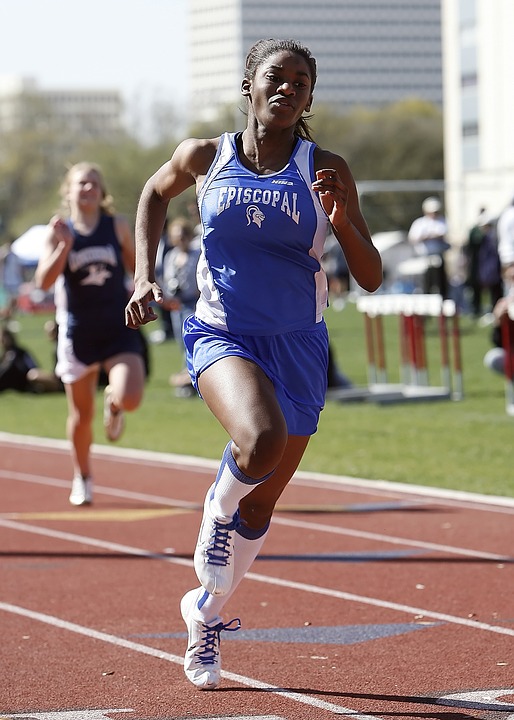By Jessica Piasecki, Manchester Metropolitan University, UK, @JessCoulson90
A longer version of this article originally appeared in Physiology News.
There is a very fine line between training, competition, and recovery for the elite athletes (1). For female athletes, they have an extra balance to take into consideration: the menstrual cycle.
The monthly cycles
The menstrual cycle is a natural process and is essential to maintain bone health and fertility. It can start from the age of 12 and continues until the onset of menopause around the age of 49-52.
The cycle occurs over a period of 28 days. The first 14 days are known as the follicular phase. During this phase, around day 10, the hormones oestrogen, LH (luteinizing hormone) and FSH (follicular stimulating hormone) rise, reaching their peak around day 14.
LH reaches a level double than that of both oestrogen and FSH. After day 14 LH levels rapidly drop off while oestrogen and FSH fall off more slowly, over a 5 day period. The second 14 days are known as the luteal phase and there is a gradual increase in another hormone, progesterone, which reaches a peak around day 22 and returns to base levels at day 28.

Bone stability and structure
Of these three hormones, oestrogen is a key regulator of bone resorption, without oestrogen there would be an excess of bone being broken down over new bone being formed. Bone is in a state of constant turnover, with the help of two types of bone cells (osteoblasts and osteoclasts). Osteoblasts are involved in bone formation, while osteoclasts are involved in bone resorption.
Bone resorption occurs at a much higher rate than formation; bone resorption takes just 30 days whereas the bone remodelling cycle takes 4 months. Therefore, a slight imbalance can lead to a bone fracture very quickly (2).
More is not always better
Elite female athletes, particularly those involved in sports that usually adopt a leaner physique with low body fat, are at a greater risk of disordered eating. The reasons for this disordered eating could be external pressures from teams, coaches and sponsors, or the athletes themselves having the belief that the leaner and lighter they are, the quicker they will be. These pressures may also cause the athlete to push their body to further extremes.

Without the necessary energy intake, the menstrual cycle will most likely become irregular and eventually cease (which is known as amenorrhea). Amenorrhea causes the levels of oestrogen to become reduced, leaving a disproportionate ratio of osteoblasts and osteoclasts, and a higher rate of bone resorption.
This may ultimately lead to bone injuries, (the precursor to osteoporosis), or even osteoporosis at a very young age, making any further career achievements even more difficult.
These three symptoms (disordered eating, amenorrhea and osteoporosis) became more prevalent in the 1990s and were termed ‘The Female Athlete Triad’ in 1997 by the American College of Sports Medicine. It has been estimated that only 50% of trained physicians are knowledgeable about the female athlete triad (3). More recently the triad has been regrouped within a term known as RED-S (Relative energy deficient syndrome); deemed to result from continual disordered eating. Being in a state of energy deficiency for a long duration can disrupt many processes within the body, including the cardiovascular, digestive and hormonal . Redefining the RED-S also allows male athletes who present with similar issues to be included (4).
Current research has looked at the differing effects of the components of the triad on injuries, and bone and muscle health. At Manchester Metropolitan University, we have carried out our own research on some of the UK’s most renowned female endurance runners, investigating the effects of altered menstrual cycle on bone health. Athletes with amenorrhea presented with a greater endocortical circumference (the outer circumference of the inner cortical bone in the tibia (lower leg) and radius (forearm) than controls. Only the athletes with regular menstrual cycles (eumenorrheic) had a greater cortical area, in the tibia and radius, compared to controls. The athletes with amenorrhea had thinner bones (i.e. larger but not denser). We are working to better understand the issues, so accurate diagnosis will become more frequent.
What we really need is education at a young age, as most athletes become familiar with the triad only once they have been diagnosed with a bone injury. If athletes are made aware of the symptoms and issues around the triad before they occur, then nutrition and menstrual cycles can be more closely monitored as they progress through their athletic careers.
Read the full-length version of this article in our magazine, Physiology News.
References
- Barnett, A (2006). Using recovery modalities between training sessions in elite athletes does it help? Sports Med (36), 781-96
- Agerbaek, M. O., Eriksen, E. F., Kragstrup, J., Mosekilde, L. and Melsen, F. (1991) A reconstruction of the remodelling cycle in normal human cortical iliac bone. Bone Miner, 12 (2), pp. 101-12.
- Curry, E, Logan, C, Ackerman, K, McInnia K, Matzkin, E (2015) Female athlete triad awareness among multispecialty Physicians. Sports Med Open. 1:38.
- Tenforde, AS, Parziale, A, Popp, K, Ackerman, K. (2017) Low Bone mineral density in male athletes is associated with bone stress injuries at anatomic sites with greater trabecular composition. Am J Sports Med. DOI: 10.1177/0363546517730584
